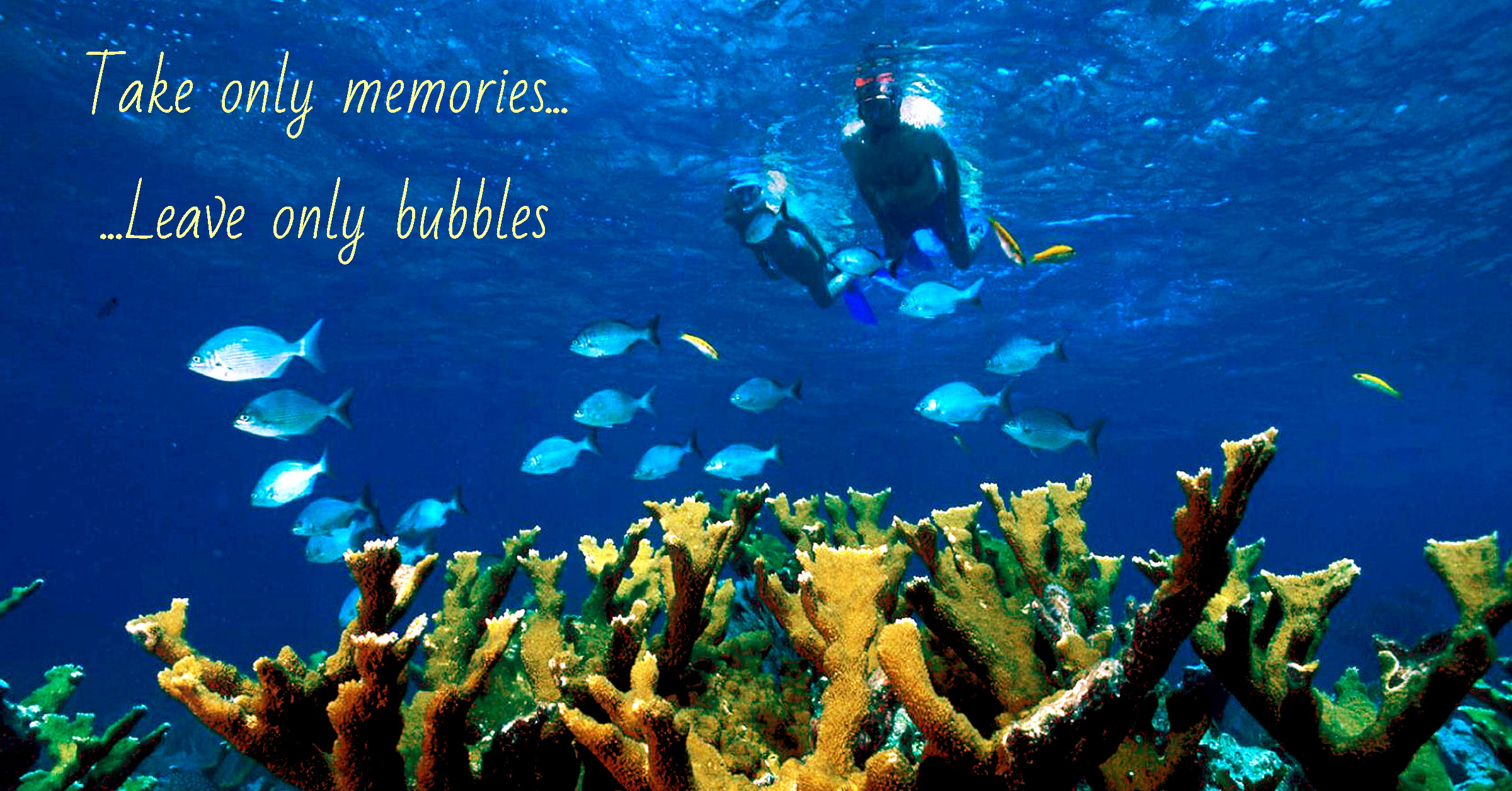
There you are, gliding through cool tropical water on a sunny day. Your mask isn’t leaking, your snorkel is comfortable, and there’s a beautiful coral reef a few feet below you. Fish of all shapes and sizes abound, and then you see it… A sea turtle has come up right beside you! All you have to do is reach out with your hand and…
Stop!
I know it can be tempting to reach out and pet that sea turtle swimming next to you, or to pick up that cool-looking seashell you spied. Humans are not only curious, but we are also very tactile. Remember when you were a kid and just wanted to touch anything that looked in any way soft, spongy, tickly, fuzzy, or bumpy?
Sea animals are so unlike anything you might find on land. They can be bright and colorful and have otherworldly textures. They have a way of bringing out the curious, tactile kid in us. Reaching out to touch coral is especially tempting because of how strange and beautiful it looks!
Our parents once told us to, “Look, but don’t touch,” when we visited zoos, museums, and other public spaces. As snorkelers, we need to listen to the echo of that voice in our heads when we’re in the ocean.
Look, but don’t touch!
There’s an old adage among experienced snorkelers and divers that goes like this:
“Take only memories, leave only bubbles.”
That’s because the beautiful reef habitats you have the privilege to enjoy are precarious and fragile, as are the plants and animals that call them home. Treating them with the respect and care they deserve is part of being a responsible and ethical snorkeler.
At this point, you might be wondering to yourself, “But surely, one small brush of the fingers over a sea star, or nicking one tiny piece of coral as a souvenir can’t make such a difference, can it?”
Well, there’s your problem…
You’re only thinking about your own actions, not the actions of everyone else.
There’s no potluck if everyone decides not to pitch in, and there’s no reef if everyone decides just one little piece of coral is worth taking, or one animal is worth disturbing.
Remember, reefs that are accessible to snorkelers and divers get tons of traffic each year. That’s tons of folks feeding stingrays, petting turtles, and breaking coral with clumsy fins. It’s up to each one of us to decide for ourselves that we don’t want to contribute to the destruction of these precious environments.
Plus, ocean ecosystems (reefs especially) are already stressed from climate change, pollution, increased acidity, and overfishing, so they really can’t afford destructive behavior from tourists. Ethical snorkeling means considering your actions in context with everyone else’s!
Touching marine life is harmful to the animals and their ecosystems
Yes, if you touch coral you could kill it
Corals may look like strange plants or rocks, but did you know corals are actually animals? They can eat small fish and invertebrates by stinging and trapping them, and they are evolutionary relatives of jellyfish! Their bright colors come from a symbiont that lives inside the coral polyps called zooxanthellae. The coral polyps receive most of their food (up to 90% in some species) from the zooxanthellae, which are photosynthesizing micro-organisms similar to algae. In return, the zooxanthellae get carbon dioxide and other nutrients, as well as safe and sheltered access to sunlight.
Coral polyps protect themselves (and their zooxanthellae partners) from infection with a mucus layer that is home to a rich microbiome, just like your own skin or gut! By touching coral, either directly or accidentally, you damage this protective layer. Not only can this action expose the coral to pathogens, but the damage will also trigger a stress response. When corals are stressed, they will eject their zooxanthellae. This event is called “bleaching” because without the pigmented zooxanthellae the coral polyps lose their color and become white.
If the disturbance is only temporary, the coral polyps may eventually recover their zooxanthellae. But sometimes the damage is too severe and the polyps will die.
There is always a chance that coral will die if you touch it or step on it.
Multiply that by thousands of tourists over decades, and then add in climate change, boat damage, and pollution and… well, you get the picture!
If you accidentally damage coral, it should feel as if you accidentally hit someone’s kitty or puppy on the road! If you’re a driver, you learn to navigate the roads defensively and with high alertness at all times to avoid such a thing, right? Inexperienced snorkelers on a coral reef are like a bunch of freshly licensed teens on a road full of cats and dogs.
It’s your responsibility to ensure that you’re a practiced snorkeler. You must be able to control your movements and position at all times without standing, holding, or pulling on anything in your environment.
What about other animals like fish, turtles, and dolphins?
When it comes to snorkeling with marine animals, there are three clear (and easy!) rules for you to follow:
- Don’t touch
- Don’t chase
- Don’t feed
And all of those basically amount to: Don’t disrupt any animal’s natural behavior. Simple!
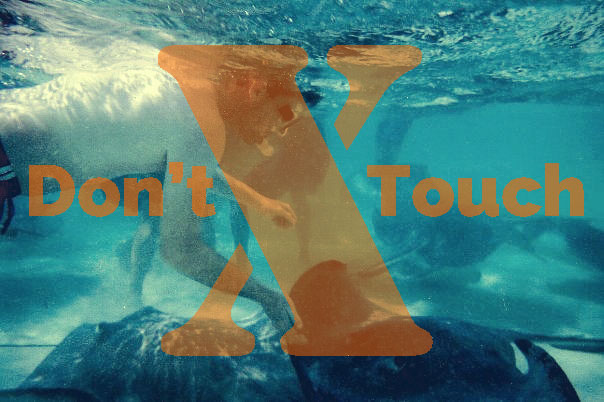


1. Don’t touch coral or other wildlife.
You may think you’re being gentle or that the animal isn’t bothered, but you are likely causing the animal stress. Even if a curious animal approaches you, don’t reach out to touch it. Not only is it better for the animals to keep your distance, but it’s also for your own good! The last thing you want on your trip is a nasty bite or sting from an animal you’ve touched or irritated. Many reef fish have spines near their fins and tails to deter predators, some of which may even be venomous. Reef fish also have a mucus layer that protects their fragile skin from wounds and pathogens. Like coral, even just touching a fish can harm them enough to kill them.
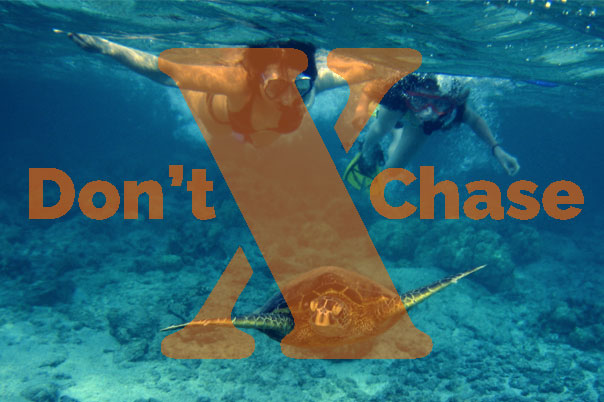


2. Don’t chase wildlife.
Besides not directly interacting with marine life, there are a few other things you should do as well. Your goal is to make your presence as non-threatening as possible for the animals whose home you’re a guest in.
For one, do your best to minimize splashes, bubbles, and loud chatting. Most marine animals are sensitive to sound and physical disturbances in the water. For bigger animals like sharks, turtles, and dolphins, keep a distance of at least a few meters from them. The only time a closer distance is acceptable is if they choose to approach you (and even then don’t touch!) Behave passively if approached. Marine reptiles and mammals (e.g. dolphins, turtles) also must surface to breathe. So be sure not to position yourself directly above them!
In some jurisdictions, it is even illegal to approach or interact with certain marine animals, and doing so can net you a hefty fine.
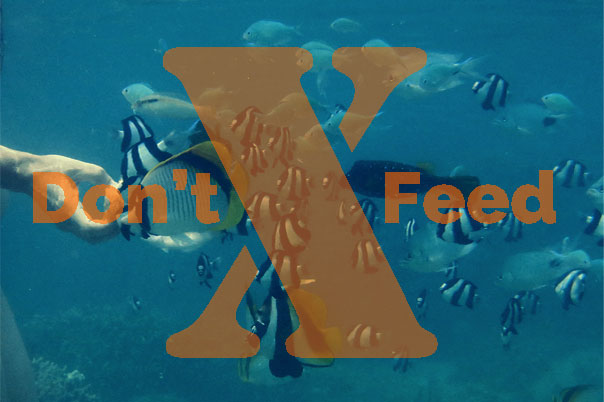


3. Don’t feed wildlife.
Food webs are complicated aspects of nature. Adding a whole new source of energy to them (remember it’s not just you doing the feeding, it’s thousands of people every year) is a recipe for disaster. Entire trophic systems can be upended when you change an animal population’s diet and feeding habits. Conditioning animals to expect feeding can also disrupt critical behaviors that they need to survive and make them more vulnerable to ship strikes, intra-species aggression, and disease transmission.
Just don’t do it, and definitely don’t participate in tours that feature feeding wildlife!
Related post: A quick test for determining whether your snorkel tour cares about ocean conservation
Don’t touch coral to get a souvenir!
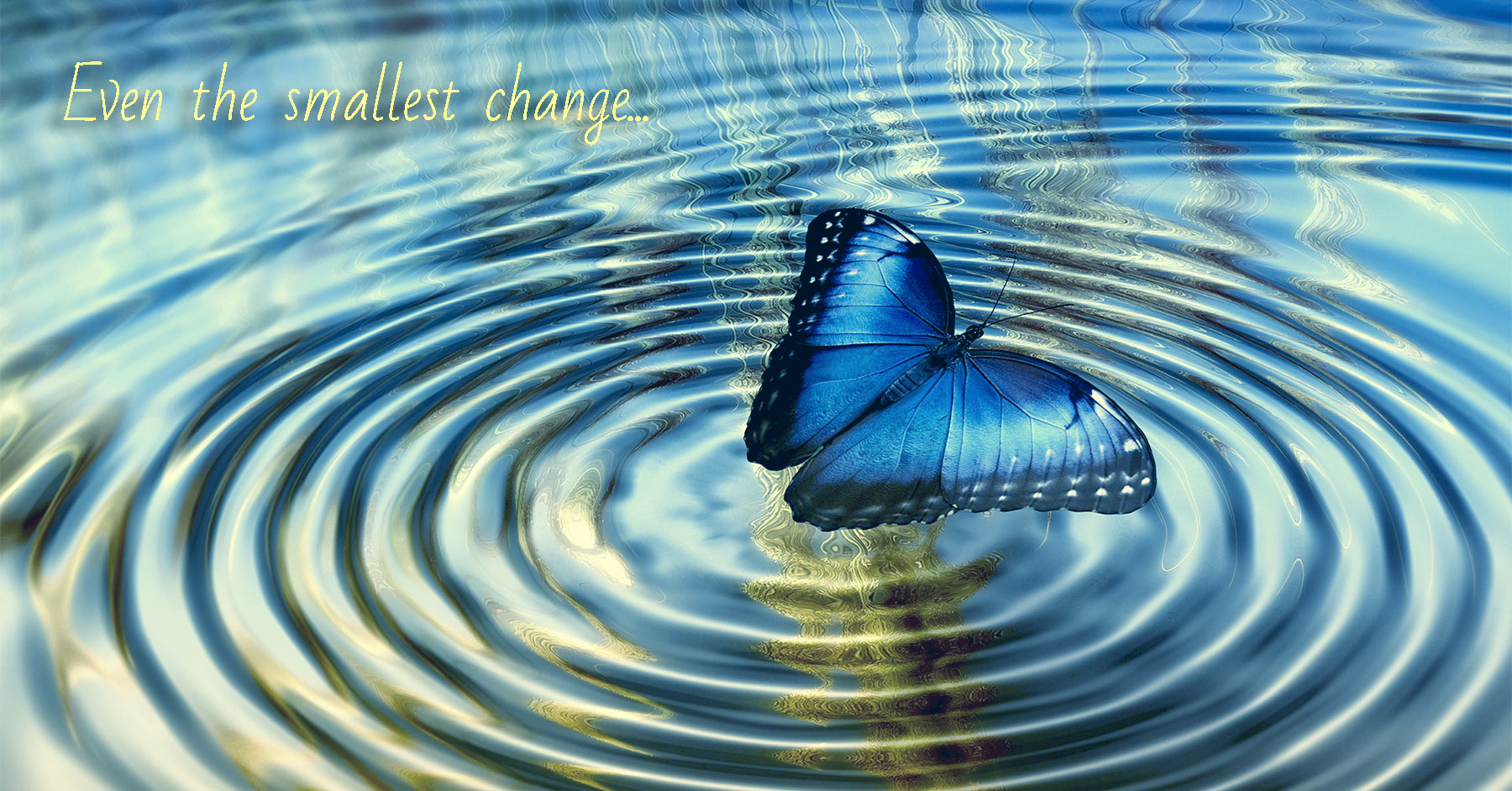


Responsible snorkeling means you treat the surrounding environment, as well as the animals, with respect. That means the only thing you should be picking up is trash and debris. I know it can be nice to have a physical souvenir from an amazing trip, but please leave that cool seashell where you found it. Remember, there’d be no reef if everyone decided it was okay to take a small piece of it home. Plus, reef ecosystems are complicated, so think of your actions as having a Butterfly Effect… where even the smallest change can have a compounding effect.
What if I accidentally touch coral?
Sadly, even the most well-intentioned snorkeler can end up damaging coral or wildlife if they’re inexperienced. That’s because you must never touch coral or stand on it. After thousands of tourists, a poked and prodded coral reef can easily weaken and die (and don’t forget the other stressors they’re dealing with too!)
The solution? Get some pool practice to develop buoyancy control and proper finning technique. While this won’t completely eliminate your chances of accidentally damaging coral, it will significantly reduce them!
Even if you’re a strong pool swimmer, kicking with fins correctly takes practice. I mean this not just in terms of technique, but in being aware of their physical presence in the water. Learning to think of your feet as taking up several times the space they usually do takes some getting used to!
You also need to develop buoyancy control, so you can be deliberate and precise about your body’s position in the water.
Flailing about with your arms and legs because you aren’t used to currents and waves is a surefire way to accidentally kick and grab at coral! Even kicking up sediment can be damaging to coral. Settling sediment will block sunlight that the coral symbionts (zooxanthellae) need for photosynthesis.
Ideally, you will have some time to practice finning technique and buoyancy control in a pool at home or at your hotel before your expedition. Unfortunately, casual snorkelers usually don’t learn or are even aware of these skills. That’s why SCUBA diving websites and blogs are the best places to start understanding them. Pay special attention to mastering your frog kick and your breath control. Learn to stay prone and floating as much as possible. If you must come up to tread, be sure to tuck in your knees to keep your fins from touching coral or the seafloor.
Responsible snorkeling isn’t just about your intentions, it takes practice!
Photographers can also be terrible news for coral reefs because they have extra equipment and like to get close to wildlife! When you’re hung up on getting that perfect shot, your chances of agitating the sea animals or accidentally touching coral are greater. If you absolutely must bring your underwater camera, avoid using the flash. The quick bursts of light can be quite disorienting not only to the wildlife but to your fellow snorkelers as well!
Responsible snorkeling sometimes means taking only memories, not photos!
Final tip: Use good quality snorkeling gear that fits you correctly
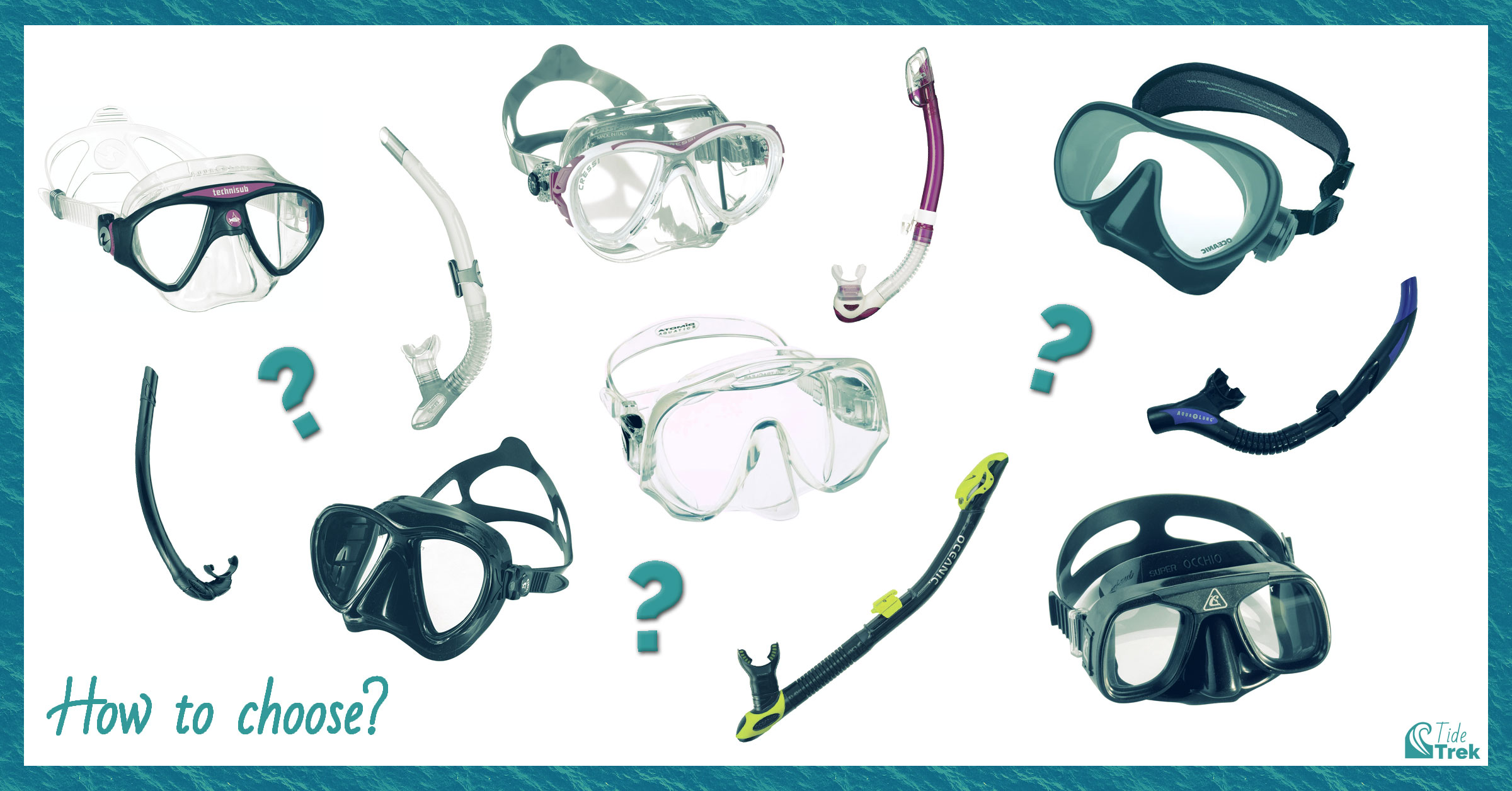


To snorkel with good buoyancy control you need to be using equipment that you’re familiar with and that fits you properly. This is a big reason why it’s a better idea to buy your own gear rather than to rent it.
Related post: How to choose a mask and snorkel that suit your face and ability
Related post: Ideal snorkeling fins for beginners
If you’re totally new to snorkeling, and you’re not a strong swimmer, then I highly advise you use a flotation vest. Not only is this a safer option for you, but the increased stability provided by the vest will also keep you from flailing your limbs. This means you’ll be less likely to accidentally touch coral or other animals. If you’re bringing any children on your trip, then they should definitely be wearing one.
Responsible snorkeling isn’t just about protecting ocean environments, it’s about your own safety too!



Disclaimer: Some of the links used in this article are affiliate links. That means I may get a small commission if you make a purchase after following the link. If you found this article useful, consider it like giving me a little thank you!
If you want to keep updated on the content I produce here at Tide Trek, please consider signing up for my mailing list. At the end of each month I prepare a little round-up newsletter that summarizes new articles I’ve written, and content I’ve curated covering all things water sports (even some cool marine science too!)
My uncle wants to take my cousins snorkeling. I like how you mentioned when snorkeling to look but not touch the coral because they are fragile and are the home of many plants and animals. Thank you for the advice. I will share this information with my uncle so they don’t harm the coral or get in trouble.
You’re welcome, Jay! I’m glad you found the article helpful. I’m sure you and your uncle and cousins will have a great snorkeling trip!